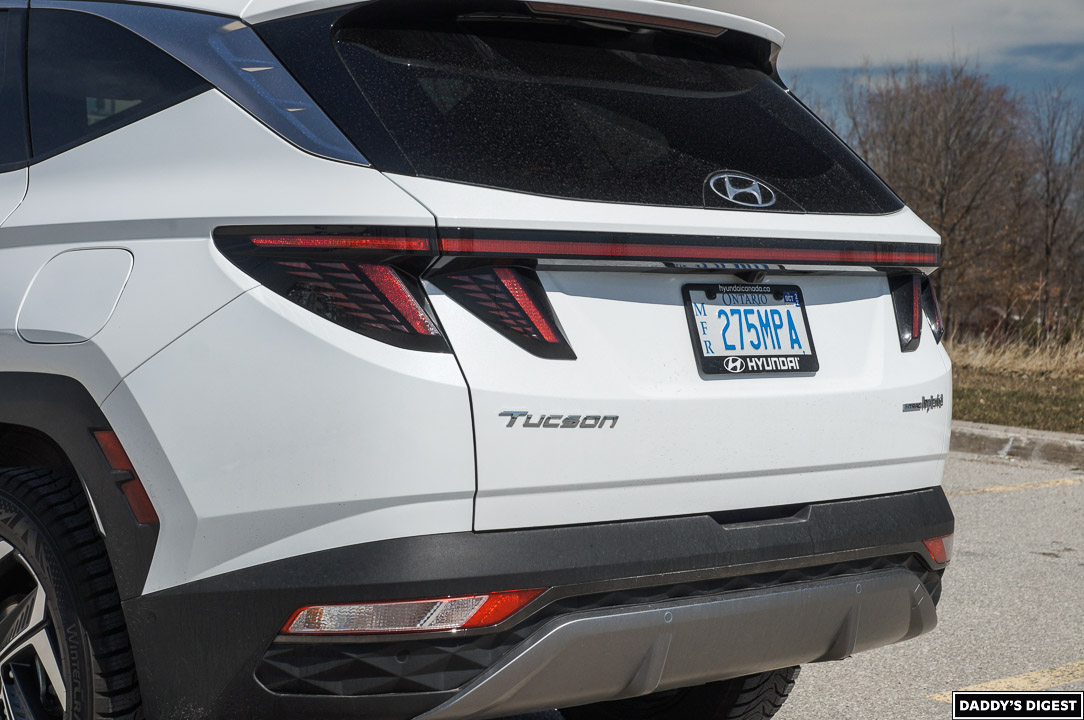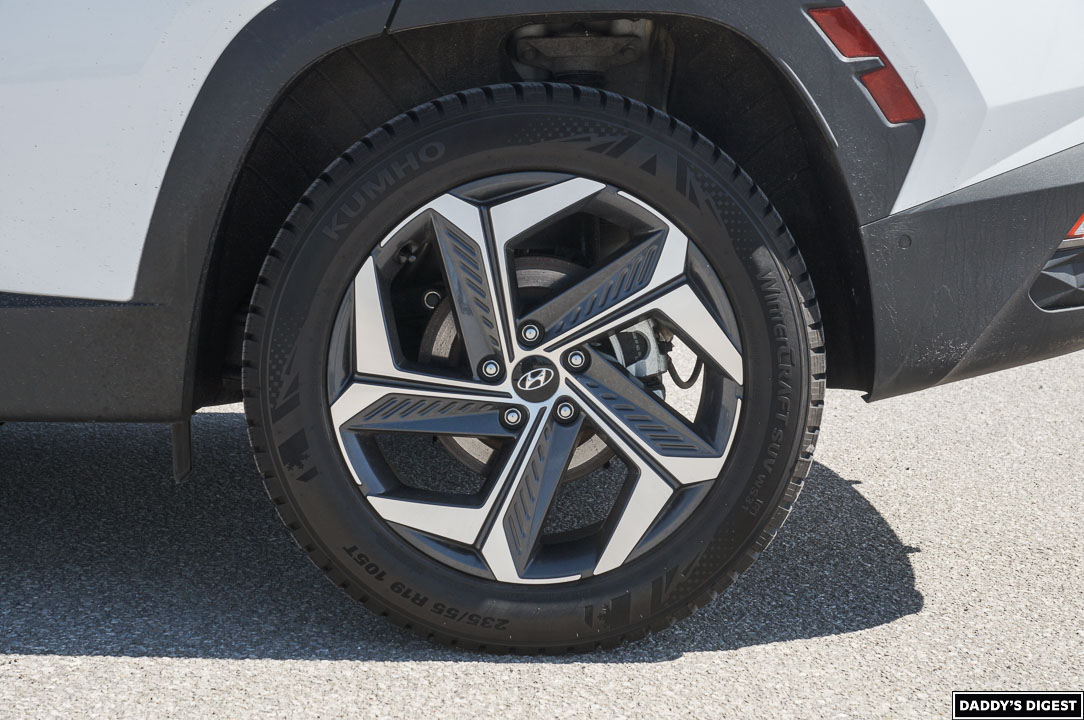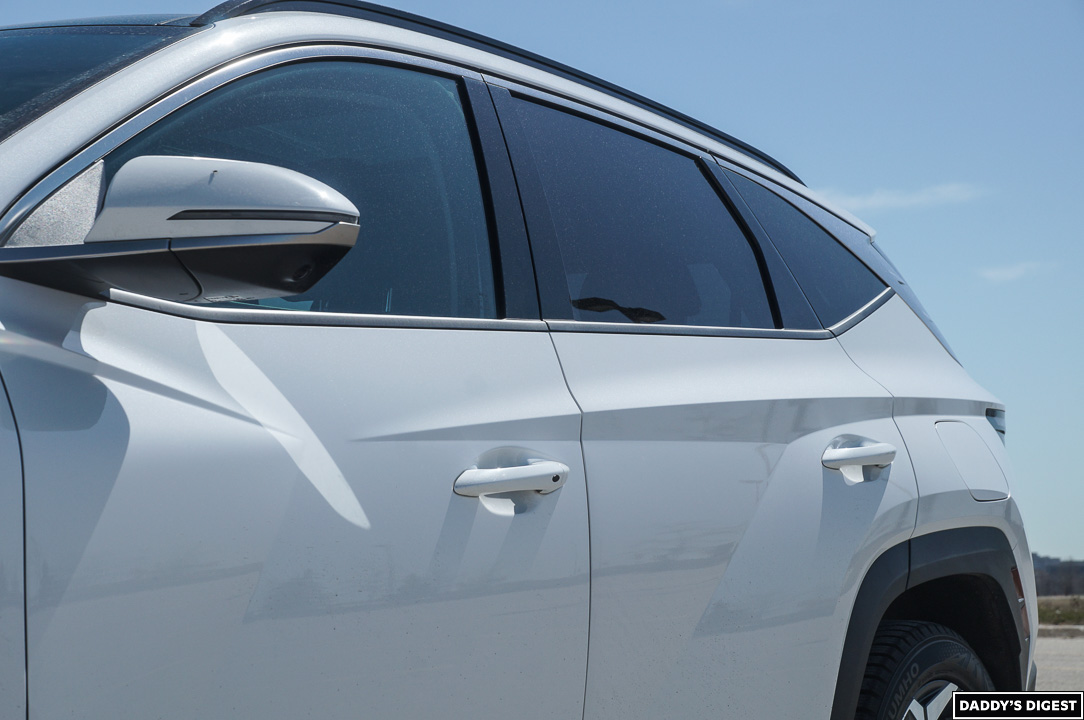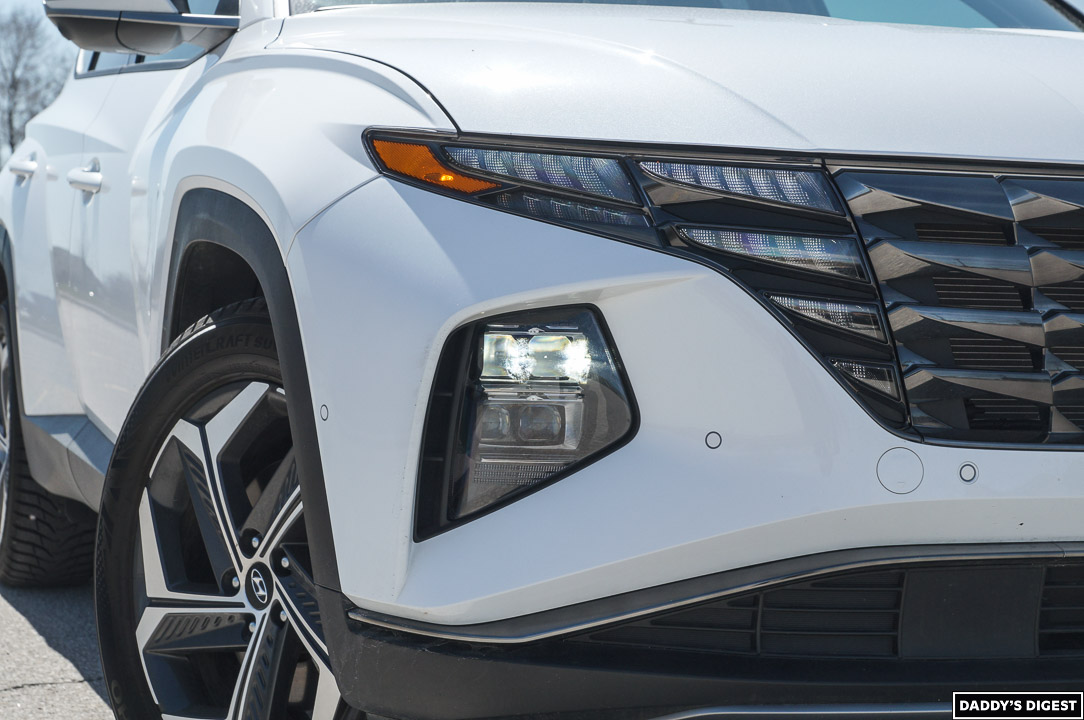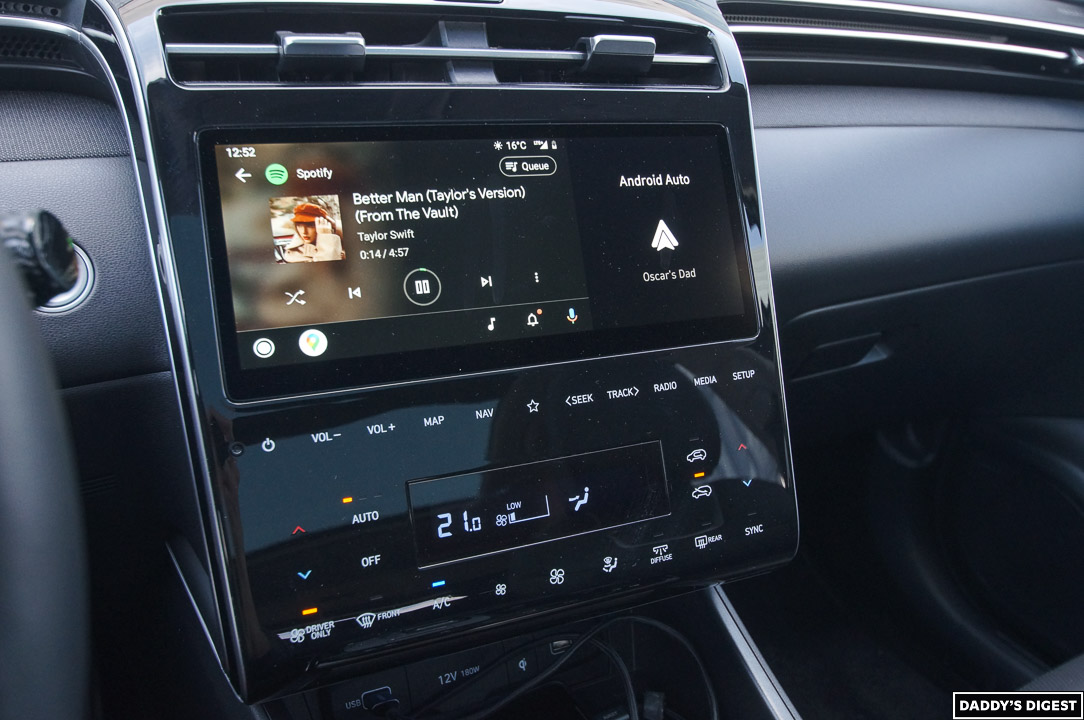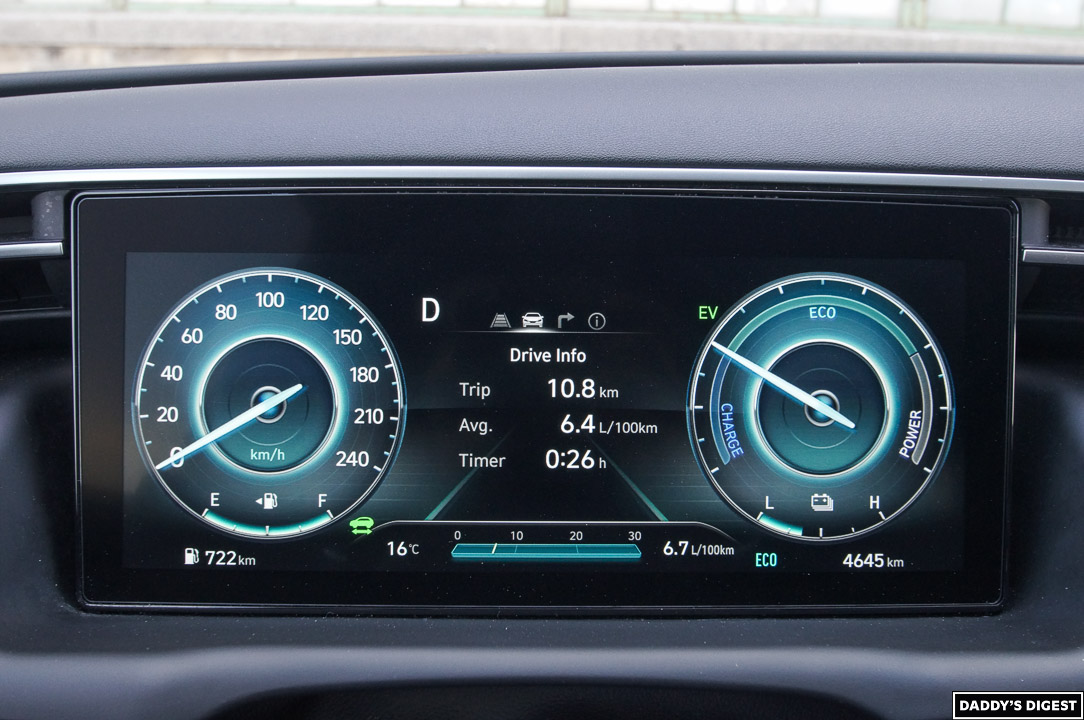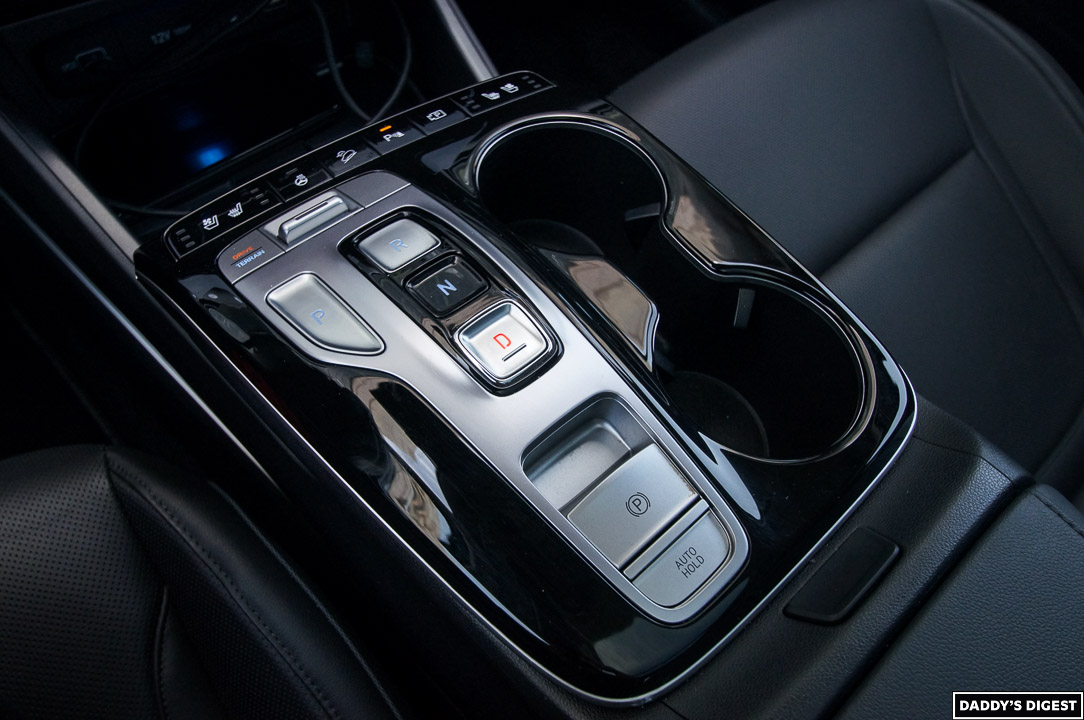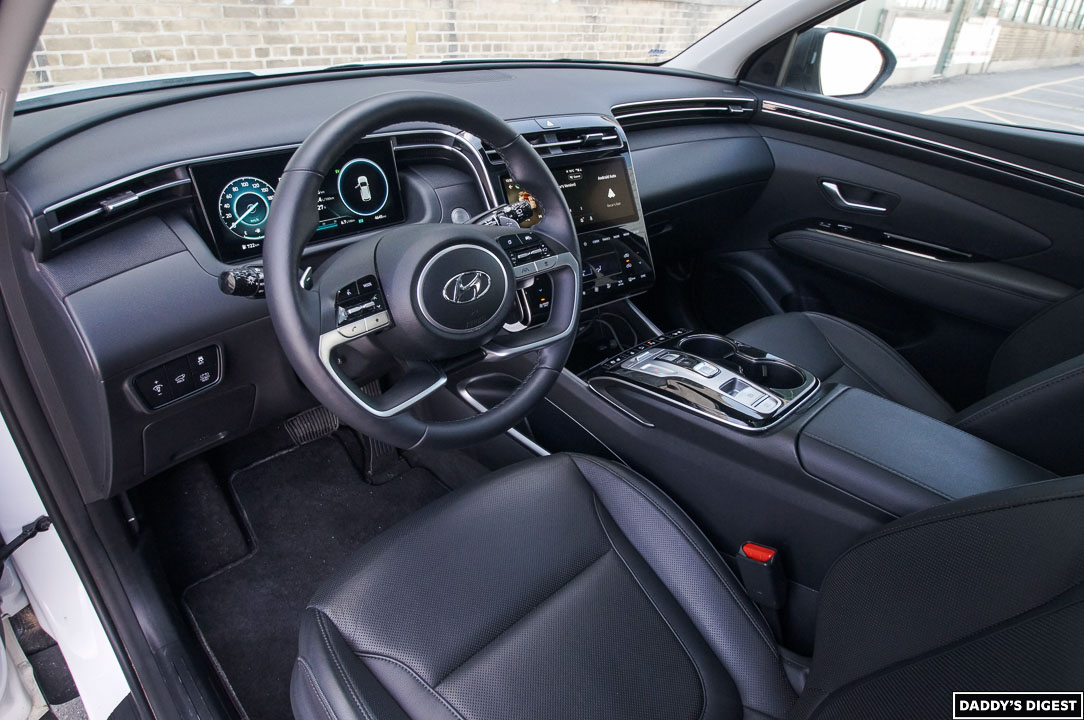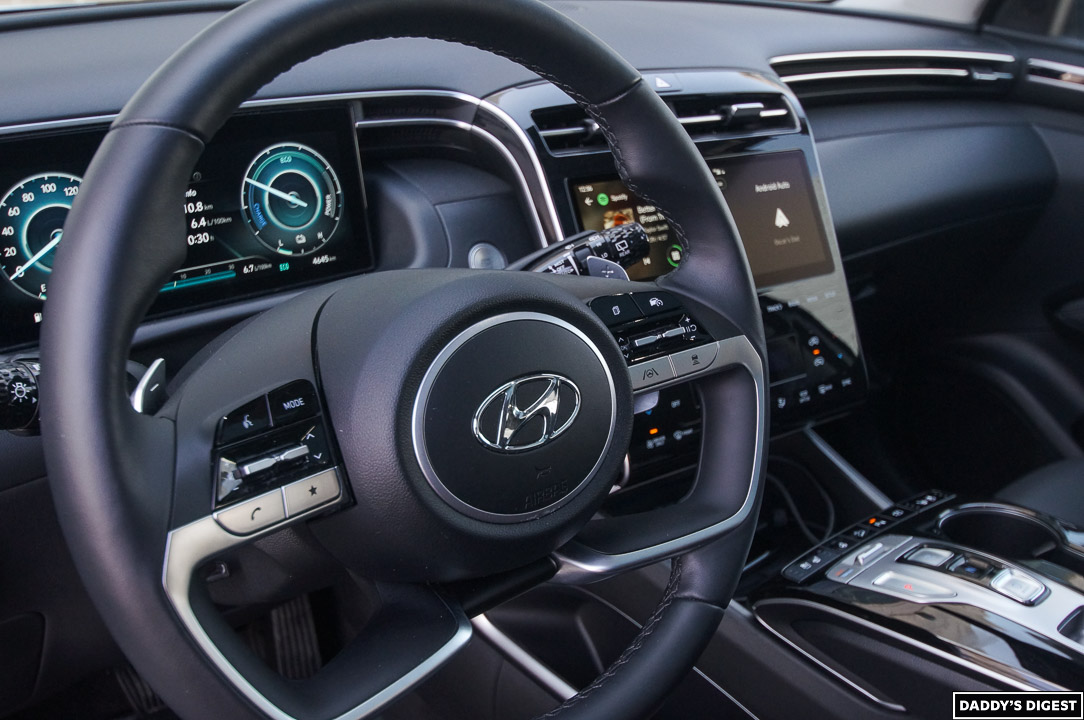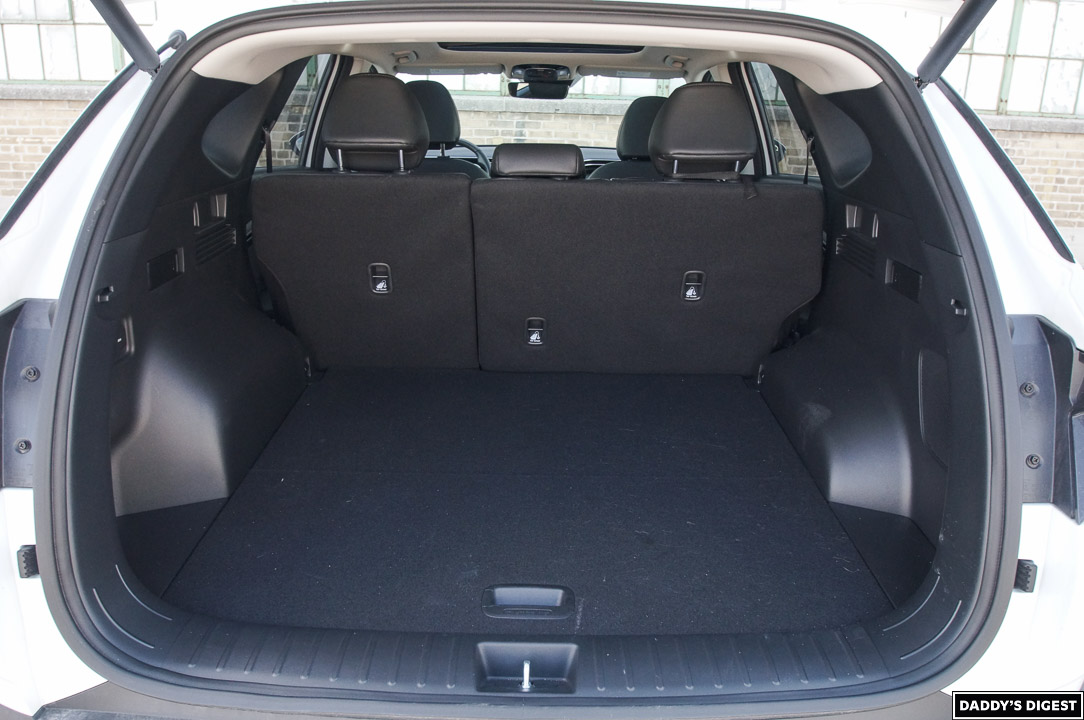Even though it’s fresh off an award win as the Canadian Utility Vehicle of the Year from the Automobile Journalists Association of Canada (AJAC), I haven’t actually had a chance to drive the 2022 Hyundai Tucson Ultimate Hybrid AWD as of yet. As a juror for the awards, I vote on what I do get to drive and write about each year, so it’s clear that my peers in the industry saw something special with this compact SUV. This week’s Daddy’s Digest car review looks at the top-shelf trim level in the Tucson range, complete with all-wheel drive.
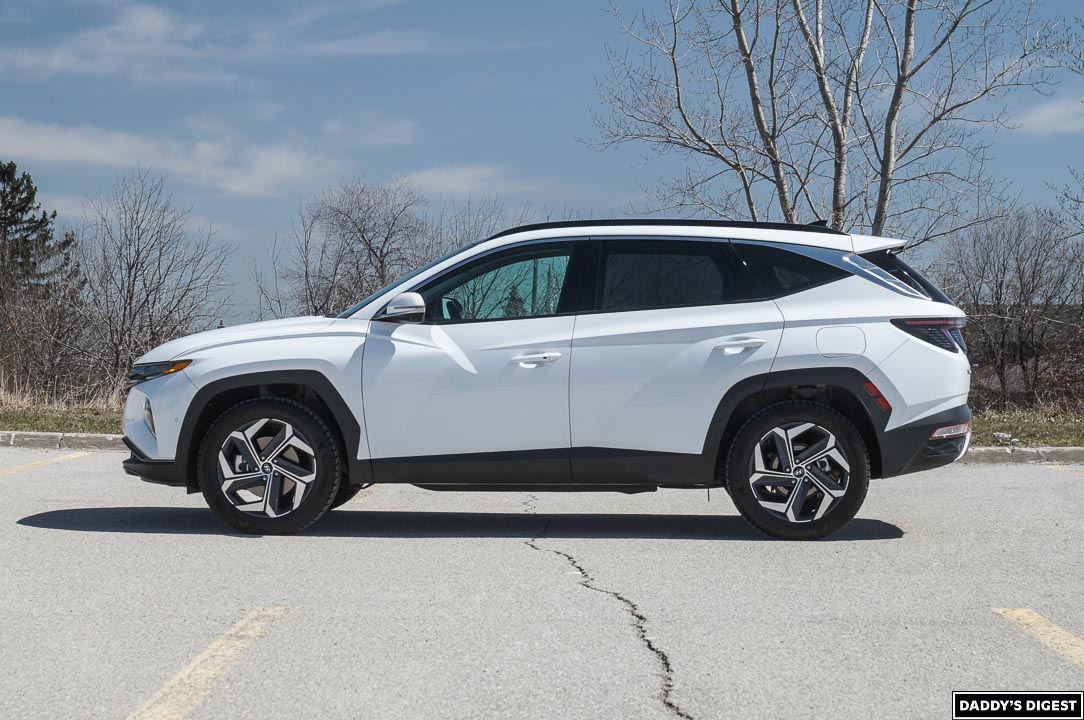
The Hybrid Compact Crossover SUV: A Hot Segment
Compact and midsize crossover sport utilities have quickly taken over from the four-door sedan when it comes to family transportation. I used to laugh at people who went out and bought a big SUV after having one child – and look at me now – I’ve got a gently used 2014 Volvo XC90 in my driveway. While availability for a 2022 Tucson probably isn’t very good right now due to the ongoing pandemic-induced supply chain issues causing new vehicle shortages, there shouldn’t be too many changes for 2023, if any at all. If you’ve decided on one, you may want to get in line for one sooner rather than later.

The Matrimony of Gasoline and Electric
The 2022 Hyundai Tucson Ultimate Hybrid AWD features a gas-electric hybrid powertrain, which is a first for the Tucson range. While a plug-in version can get a rated 53 kilometres of all-electric range, the regular hybrid charges its battery via regenerative braking. In other words, the electric motor turning in reverse acts similarly to braking and captures and converts kinetic energy to charge the small onboard battery for later use.
Under lighter load and lower speed conditions, this stored energy can then be used to drive the electric motor. This reduces reliance on the gasoline engine and improves mileage by up to nearly 30 percent. More gains are to be found in city driving, where stop-and-go traffic gives plenty of opportunity for charge-by-braking. Rated fuel economy for the hybrid powertrain is 6.3 litres per 100 kilometres in the city and 6.6 litres per 100 kilometres on the highway. Observed consumption after a week of testing saw things a bit off the mark, at 7.0 litres per 100 kilometres in mixed driving.
The gasoline side of the Tucson Hybrid’s equation is a 1.6-litre turbocharged inline four-cylinder engine that’s mated to a six-speed automatic transmission. Total output including the electric motor is 180 horsepower and 195 pound-feet of torque. It’s not exactly the most exhilarating driving experience, but it’s an adequate amount of power, and the small trade-off for the big gains in fuel economy will be worth it to many.

Living With the 2022 Hyundai Tucson Ultimate Hybrid AWD
For families with one to two children, the 2022 Hyundai Tucson will be a good fit. From a practical standpoint, rear seat legroom is excellent for teenagers and adults, and this also means that both forward and rear-facing child seats will be a pretty easy fit. LATCH anchors are provided for the outboard rear seating positions; installing a child seat in the centre rear position must be done with the seatbelt only.
With the great rear seat legroom for a compact crossover SUV, the Tucson misses out a bit on available floor space behind the second row in the rear cargo area. There’s a little bit less length available compared to a Honda CR-V or Toyota RAV4, which can potentially have an impact on families who have larger strollers. The Tucson is still ahead of the tighter interior of the Mazda CX-5, however, and finds itself in the middle of the pack here.
The overall and fit and finish of the 2022 Tucson is good, but not great. Interior materials and design are appropriate for the class and price point but aren’t quite as good as its Japanese competitors. Closing the doors results in a tinny echo, which doesn’t inspire the most amount of confidence. The touch screen infotainment system and digital gauge cluster – both 10.25 inches in size – are clear and easy to read and use, although the shiny piano black touch buttons are not as ergonomically good as hard buttons and knobs. They’ll also attract many fingerprints in a short period of time, and the lack of a volume knob is a sore point with many other automakers.

Pricing and Standard Features
The base front-drive, gasoline-only Tucson starts at $29,855 and walks all the way up to the Ultimate Hybrid’s $41,699 Canadian as-tested price excluding taxes and other levies or fees. All Tucsons get Android Auto and Apple CarPlay smartphone pairing capability, LED headlights, and a forward collision warning system with automatic braking. Among other things, the Ultimate Hybrid AWD adds navigation, Highway Driving Assist, a 360-degree low-speed camera, blind spot monitoring cameras, power adjustable front seats with driver’s memory, and premium projector-type LED headlights.
The fully loaded Tucson Hybrid Ultimate adds pedestrian and cyclist detection to its forward collision warning package, on top of existing adaptive cruise control, lane keeping assist, driver attention warning, automatic high beams, blind spot collision avoidance, rear cross traffic alert, ultrasonic rear occupant alert, and blind spot monitoring.
This pricing slots in between the RAV4 Hybrid XSE AWD ($40,790) and Hybrid Limited AWD ($44,650), which makes the Tucson a good value play against the Toyota. It’s $3,000 to $4,000 cheaper than the much more powerful but non-hybrid Mazda CX-5 Sport Design and Signature trims and is about $2,000 less than a Honda CR-V Touring. The Nissan Rogue and Subaru Forester are two other good competitors to watch out for, with similar pricing and competitiveness, but no hybrid powertrain. In terms of bang for the buck, the Hyundai does very well.

Bottom Line
The 2022 Hyundai Tucson Ultimate Hybrid AWD is a very competitive vehicle in a very competitive segment. While I think I personally prefer the refinement, fuel economy, and fit and finish of the Toyota RAV4 Hybrid, the Tucson’s value proposition makes it worth considering. The Hyundai’s exterior styling is considerably bolder and less bland than many others in its class, and it’s a mightily practical vehicle to live with every day. It hits a good sweet spot that consumers are looking for, and for that, it makes pretty good sense as to why it won AJAC’s Canadian Utility Vehicle of the Year award, even if it isn’t perfect.
